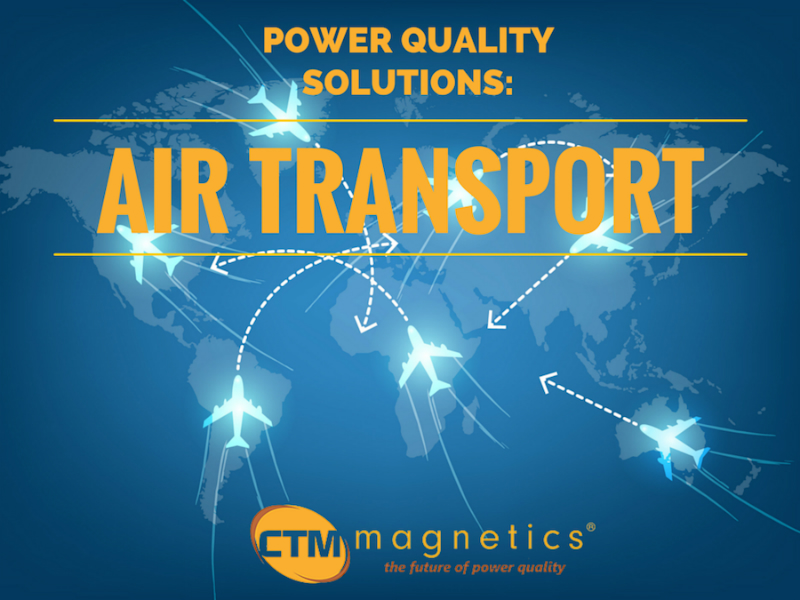Power Quality Solutions: Air Transport
Air Transportation
A trend sometimes known as “More Electric Aircraft” (MEA) has affected aircraft manufacturers in recent years. While propulsion is generally provided by a turboprop or turbojet engine, historically, aircraft design has used hydraulic, pneumatic and mechanical linkages to control and power non-propulsive systems. Replacing those technologies with electrically actuated devices leads to increased reliability, reduced weight, a reduction in the need for maintenance of moving parts and overall economy of operation.

For example, passenger aircraft are often built with a variety of power generating systems that produce 115 and 230 VAC as well as direct current sources ranging from 14 to 48 VDC.
While electric propulsion systems have a long way to go before mainstream adoption, electrification of non-propulsion systems can create huge advantages for aircraft, including decreased weight and fuel consumption, improved reliability and maintainability, and lower total life cycle costs.
As more aircraft are designed following MEA principles, power quality challenges appear. These challenges apply to the other types of transportation as well. Any electrical load device is more prone to fail when power quality suffers, such as when harmonic distortion, resonance, voltage spikes or frequencies fall outside of specified parameters. That is why power quality solutions are critically important.
Power Quality: A Must for Today's Air Transport
For the air transport industry, power quality is a must. The future depends on it, as does the efficiency of moving goods all across the planet. As transport vehicles becoming increasingly electric, the demand for power quality skyrockets. CTM Magnetics offers the solutions with innovative technology and products that are the pinnacle of clean, reliable, and renewable power.
 " alt="">
" alt="">